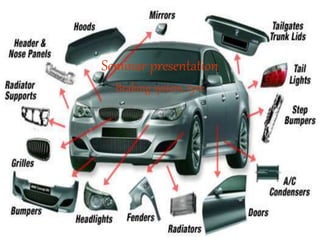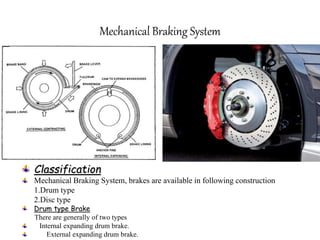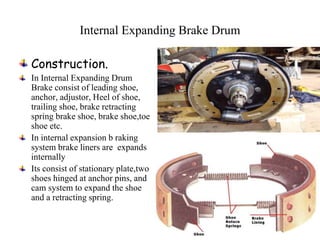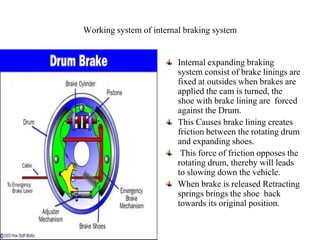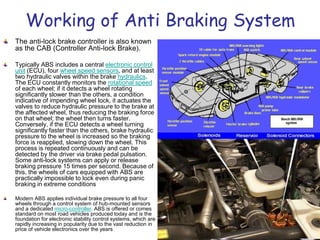This document provides information about various braking systems including hydraulic, pneumatic, mechanical, disc, and anti-lock braking systems (ABS). It discusses the components, construction, and working of each system. The key points are:
1) Braking systems use friction to slow or stop a moving vehicle by converting the vehicle's kinetic energy into heat.
2) Common braking systems include hydraulic which uses brake fluid, pneumatic which uses compressed air, and mechanical which can be drum or disc types.
3) ABS monitors individual wheel speeds and regulates brake pressure to keep wheels from locking during braking, improving vehicle control on slippery surfaces. It features sensors, valves, a pump, and electronic controller
